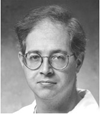I like knowing how deeply anesthetized
my patients are, not just that they are
unaware. How much a patient is unaware
as a continuum is a lot more important
that the binary notion of awake vs asleep. I do this with a BIS monitor
(and could do the same with Hospira’s PSA monitor) and make lots of decisions based
on it and I think provide better care for the effort. My reasons for saying this follow.
Hemodynamic and analgesia decisions. The BIS monitor is a hypnosis monitor. There are three other important elements of
an anesthetic: analgesia, neuromuscular blockade, and sympathetic reflex
control. Let’s say the patient is hypertensive. There are three possible causes for it:
insufficient hypnosis, insufficient analgesia, and sympathetic reflexes. Given a BIS value less than 60 then I can give
an analgesic trial and if that does not work treat the blood pressure
primarily. I might choose to use the
anesthetic as my antihypertensive or I might choose to use a specific
antihypertensive drug. Whatever I
choose, I am doing it rationally. My non
BIS-using colleagues just dump in the anesthetic for everything, BP, analgesia,
and sympathetic control; thus explaining
the observation that BIS values, blinded to the anesthesiologist, tend to be
much lower than when they are not blinded. To avoid the dreaded awareness we all overdose. As an aside Bennett etal presented some interesting
data at this year’s ASA on a possible analgesia monitor, so one day we will be
able to quantitatively monitor all four elements of an anesthetic.
Overdosing with anesthesia. While we are talking about overdosing maybe
it is useful to recall that Terri Monk and colleagues report a higher death
rate at one year in association with such an overdose method….it seems that
these anesthetics leave a biological lesion long after the case is done. Now I agree that this is just an association
study but then there is the annoyingly supportive material published by
Eckenhoff, Wei, and by Xie in separate publications indicating dose and time related effects of volatile
anesthetics (especially isoflurane) exposure to produce amyloid depositioin (Alzheimers
protein) and apoptotic programmed cell death in brain tissue. One wonders if similar bad things happen in
nonneural tissue to account for Monk’s observations. In addition, Bohnen etal
have their underpowered study that almost showed an effect of cumulative anesthetic
exposure to predispose to the genesis of Alzheimers disease. I am
quite sure that more data will be forthcoming that systematic anesthetic
overdosing is not a good thing and that the most valuable use of BIS monitoring
won’t be to avoid too light anesthesia but quite the opposite….to prevent too heavy anesthesia.
Burst suppression. The device has a handy modality on it called
the suppression index. It tells you what
percent of the EEG is flat. Very handy
for when the brain is swelling out of the head and you have to run maximal
doses of thiopental or propofol. Once
the eeg is fully suppressed there is no advantage and lots of disadvantages to
increasing the dose further. An abstract
at a neurosurgery meeting a couple years ago compared this processed EEG
calculation of burst suppression with raw eeg with bedside evaluation of the
waveform. They were reported to be
comparable methods with non comparable cost (raw EEG + neurologist = $$$))
Ischemia detection. Occasionally for severe ischemic events this
unit will give a faithful reading of something bad happening. I would not rely on it to say all is well but
it sure has detected and confirmed bad things at times.
Another reason is MONEY!... I did a retrospective review of the
financial impact of introducing BIS to our ambulatory care center when I was at
WVU using CompuRecord software to track anesthetic usage. Similar to what I stated earlier about
too-deep anesthesia when not using BIS, we found significant financial savings
accrued from BIS use just in terms of less anesthetic drug use. In
addition we found shorter times to leave the OR after the end of the case,
better Aldrete scores in the PACU and shorter times to being discharge ready
from PACU. It was difficult to translate
these latter advantages into dollars because we could not indentify an FTE to
eliminate. Interestingly, however, in
this context of high volume high turnover anesthetics, the money saved in
anesthetic usage per case did not exceed the cost of the many BIS patches that
were needed. However, the financial
advantages for long cases is undisputed. I never published this work but someone else did later report the same
thing basically.
Oh yes. Prevention of awareness. I
do use the BIS for that but the way I and others use it to run patients less
deep I am a bit surprised we don’t see a higher incidence of awareness through
its use.
So, here is a classic example of how I
use it: Patient presents for extensive back surgery in the prone
position. I know that if I let the
patient have prolonged surgery, hypotension or anemia that the risk of
blindness, although still low, rises. I
also know that intraocular pressure tends to rise with increasing time. I don’t ever want to have to deal with that
blindness problem in any of my patients and I do quite a few of these cases
every year. Without the BIS monitor I
would have to overdose then run phenylephrine. However, with the BIS monitor my
instructions to my residents are this: BIS 55, MAP>80, Hb>10. Once the anesthetic dose is just right to produce the desired BIS then
we manipulate the blood pressure with fluids, analgesics, and vasoactive
drugs….all centered around the BIS monitor.
So, it seems that the BIS monitor really has multiple uses: save money, titrate analgesia, sensible use of antihypertensive meds, prevention of anesthetic toxicity, and prevention of awareness. I cannot think of a reason for a thoughtful anesthesia practitioner to not use it.
the following added on dec 3, 2007:
A colleague advises me that there is a recent cochrane review that also supports use of bis monitoring for things other than preventing awareness:
http://www.cochrane.org/reviews/en/ab003843.html
 Mitch Keamy is an anesthesiologist in Las Vegas Nevada
Mitch Keamy is an anesthesiologist in Las Vegas Nevada
 Andy Kofke is a Professor of Neuro-anesthesiology and Critical Care at the University of Pennslvania
Andy Kofke is a Professor of Neuro-anesthesiology and Critical Care at the University of Pennslvania
 Mike O'Connor is Professor of Anesthesiology and Critical Care at the University of Chicago
Mike O'Connor is Professor of Anesthesiology and Critical Care at the University of Chicago
 Rob Dean is a cardiac anesthesiologist in Grand Rapids Michigan, with extensive experience in O.R. administration.
Rob Dean is a cardiac anesthesiologist in Grand Rapids Michigan, with extensive experience in O.R. administration.
I guess since you "routinely" use the BIS monitor, the increase in patient questions (fear) promented by the news media and movie shouldn't be a problem. Well, other than the increase in time spent to calm and educate the patient/family.
Very nice post!
Posted by: rlbates | December 01, 2023 at 06:15 AM
where have you guys been??
Posted by: shomama | December 27, 2023 at 09:12 AM
Good post Andy! The comment about excessive depth of anaesthesia and increased mortality is interesting. It raises the possibility of an inherent toxicity of general anaesthetic agents. As a followup to the B-aware study (Lancet 2004: 363:1757-1763) we are reviewing the survival at one year of those patients and relating it to their BIS readings.
Posted by: RichardH | January 05, 2024 at 04:30 AM
You can't have it both ways with BIS. You modify your existing clinical skills by using BIS to either avoid anesthetic overdose and risk greater awareness, or to avoid awareness by increasing anesthetic depth and increasing the risk of overdose. Using BIS has both increased awareness and killed from overdose.
Posted by: Hansel de Sousa | February 07, 2024 at 02:40 PM
Since December 1997, I have routinely titrated propofol hypnosis with a BIS Monitor to 60-75, a range compatible with moderate to deep sedation for my office based elective cosmetic surgery patients, resulting in significant propofol cost savings in addition to rapid, clear-headed recoveries.(1-3)
Anesthesia awareness does exist and should be reduced. Routinely overdosing patients for fear of under-dosing is a ubiquitous practice which may result in increased one year mortality (4) and well as elevated C-reactive protein markers (5) both of which may augur postoperative cognitive dysfunction (POCD). POCD (the `forest`) is a far greater issue than that of anesthesia awareness (the `trees`). Let's not miss the forest for staring at the trees.
My BIS monitored propofol ketamine sedation or `Goldilocks` anesthesia is that which is neither too much, nor too little, but just right.
Anesthesia awareness has occurred in none of my more than 2,000 BIS monitored, albeit low awareness risk, patients since December 1997.
The brain is the target organ of the anesthesiologist's drugs. Why not measure it?
Barry L Friedberg, MD
Cosmetic Surgery Anesthesia - www.drfriedberg.com
Corona del Mar, CA 92625
[email protected]
References:
1. Friedberg BL, Sigl JC: Bispectral (BIS) index monitoring decreases propofol usage in propofol-ketamine office based anesthesia Anesth Analg 1999;88:S54.
2. Friedberg BL, Sigl JC: Clonidine premedication decreases propofol consumption during bispectral (BIS) index monitored propofol-ketamine technique for office based surgery. Dermatol Surg 2000;26:848-852.
3. Friedberg BL: Propofol ketamine with bispectral (BIS) index monitoring chapter in Friedberg BL (ed): Anesthesia in Cosmetic Surgery. Cambridge University Press, New York 2007;1-14.
4. Monk TG, Saini V, Weldon BC, et al.: Anesthetic management and one-year mortality after non-cardiac surgery. Anesth Analg 2005;100:4-10.
5. Kerssens C, Sebel P: Relationship between Hypnotic Depth and Post-Operative C-reactive Protein Levels. Anesthesiol 2006;105:A578.
red dotted rule
Comments:
Disclaimer: Dr. Friedberg is not employed by Aspect Medical Systems, makers of the BIS monitor. He is neither a stockholder nor a paid consultant. His opinions are solely based on the 11 years of his experience with BIS monitoring.
Posted by: Barry L. Friedberg, M.D. | March 25, 2024 at 06:58 AM
Hi all,
Great site love the look and feel of the place. We have a new site about blood monitoring so please give us a quick look and tell us what you think.
Posted by: richard fuller | August 05, 2024 at 06:28 PM
I saw that you talked a little about Over Dosing. Recently we found out that the great Michael Jackson died from overdosing! There is more information on it here Michael Jackson Diprivan
Posted by: Philly | June 30, 2024 at 09:07 PM
very nice your blog
Posted by: esteban | May 11, 2024 at 06:56 AM